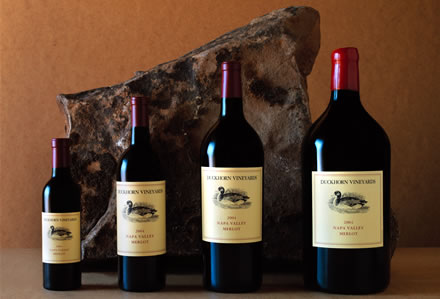
I was pleasantly surprised to see Duckhorn in a half bottle at the supermarket the other day. Why aren't there more half bottles?
I'm assuming wineries aren't selling more half bottles because 1) wineries dont like it - bigger bottles = more $$$, less bottling and logistics hassle for the same quantity of wine, 2) consumers / restaurants are used to 750ml and like it, 3) the supply chain is used to 750ml, 4) forces consumers to consume more and enjoy more, 5) it alters the taste / quality of the wine?
- Point (1) can be mitigated by charging more to the consumer to make up for the cost of doing so. But the point about the additional hassle remains. For higher end wines, maybe there's a threshold barrier to entry / taste to remain exclusive.
- Point (2) is a strong point. Not sure about demand here, and if there's no demand then wineries have no reason to do so, Similarly restaurants don't want their margins disrupted.
- Point (3) is also a strong point - if the whole supply chain (especially the retailers) is accustomed to 750ml, no one's moving / willing to sell the lower priced product
- Point (4) I understand but it's not removing the 750ml, it's adding another option for consumers.
- Point (5): this would certainly be a deal-breaker. Based on basic google-level research, there are mixed views.
- No difference: Only difference between half bottles and bigger ones: "may come up in calibrating final SO2 additions at bottling time. Half bottles have a slightly higher ratio of head-space air to wine volume, potentially accelerating oxidation; half bottles also have a widely observed track record of maturing (for better or for worse) much faster than full-size bottles. Greg Graham, winemaker for Rombauer in Napa Valley and for his own Gregory Graham label, figures that might call for a slightly higher final SO2 addition in order to slow things down."
- Difference: "After that I opted to open the two Champagnes at home with friends, far from any potentially derisive restaurant staff. I wanted to compare them to the same wines in full bottles. I asked my friends to pour all the Champagnes for me blind. I could tell the difference between the half and full sizes immediately. The half-bottle wines were more evolved, with a yeasty, biscuity character very different from the ripe fruit and bright acidity of the full bottles; the Marc Hébrart was almost oxidized."
References:
http://www.foodandwine.com/articles/is-wine-in-half-bottles-fully-worth-it
https://www.winesandvines.com/template.cfm?section=features&content=55042
http://www.wsj.com/articles/SB10001424052702304363104577390161650400418

Thank you for posting this, Yen! I've always wondered why half bottles aren't more common.
ReplyDeleteI am also very surprised at why half bottles are not more popular.
ReplyDeleteI guess that people who drink daily can finish a 750 ml bottle before it goes bad, however, I would expect that single people who drink casually may have a hard time finishing a bottle.
Before Christmas TJ has a great deal on one brand of half bottles of champagne, and I have to say that the size of a 375 ml bottle is perfect to have a drink in 2.